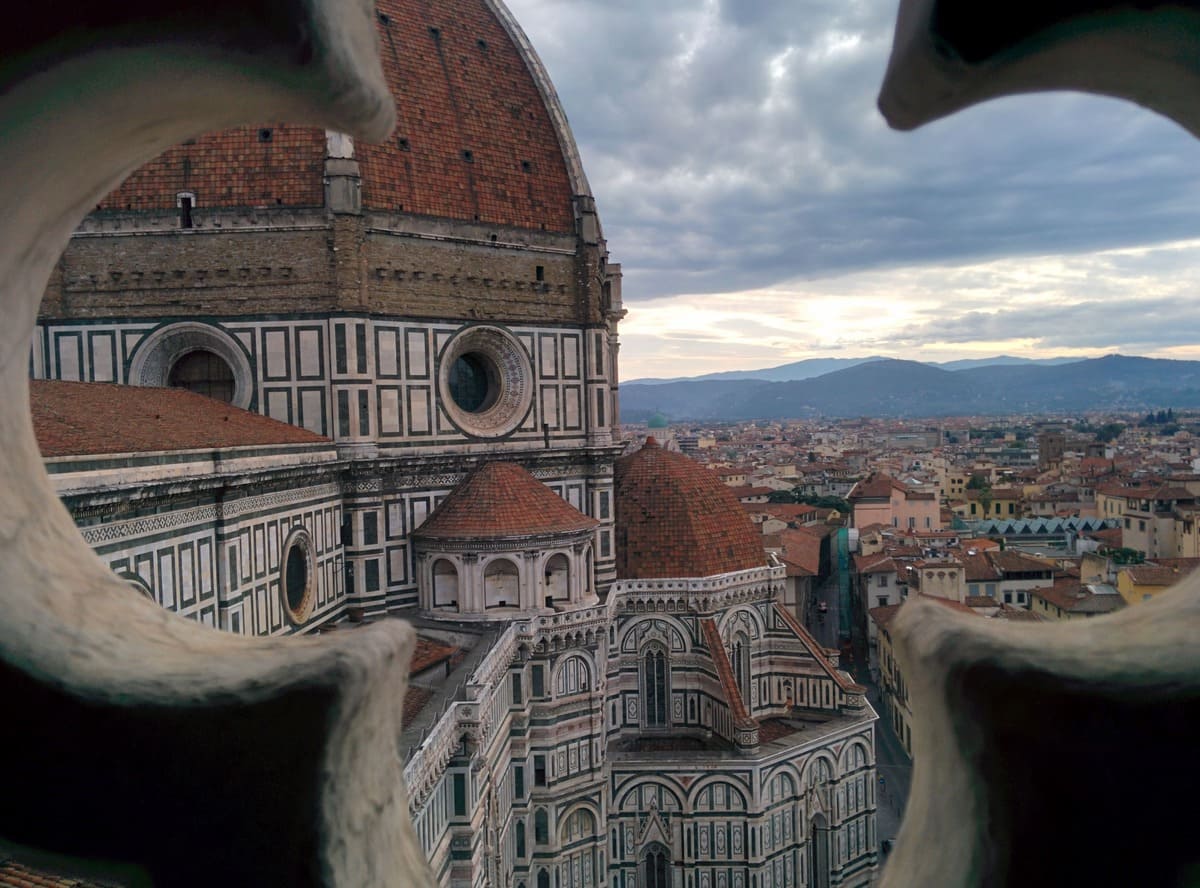When you come to Florence, you will definitely hear many, times the name of the Medici family. The Medici family was undoubtedly the most important of the Florentine families, as they managed to take over control of the local government already during the 1430s.
Later on, with time, they became the Dukes of Florence and Tuscany, ruling until the 18th century when their line died out.
How did it all happen?
Where did the power of the Medici family come from?
Let’s discover the history of the Medici by walking through the streets of Florence.
Who were the Medicis and what is the Medici family famous for?
During the 14th century, the Medici family was just one of the many patrician families of Florence. Their ascent to power started in 1397, when Giovanni di Bicci de’ Medici inaugurated the family bank.
During a few decades, the Medici family managed to establish particularly important ties with the papacy, becoming the bankers of the popes. That allowed them to extend not only their economic but also their political influence.
In 1434, Cosimo the Elder, the Medici, son of Giovanni di Bicci, managed to impose his control over the local republican government. The family kept that power until 1494, when they were exiled from the town. During the 15th century, they ruled for almost four generations: Cosimo the Elder, his son Piero, his grandson Lorenzo the Magnificent, and the one who would be exiled – Lorenzo’s son, Piero.
During the exile, the family did not abandon their ambitions to become the official rulers of Florence. That became possible thanks to the fact that two members of the family became popes. In 1513, the son of Lorenzo the Magnificent, Giovanni de’ Medici, became Pope with the name Leo X. One year after his death, his cousin Giulio de’ Medici became Pope Clement VII.
The papacy of the two Medici popes reinforced the international position of the dynasty and made possible the final return of the family to town. In 1529 the Medici attacked Florence, and the city’s republic collapsed into the hands of the Medici family in 1530. In 1532, Pope Clement VII bestowed on Alessandro de’ Medici the title of Duke of Florence.
The Medici ruled as Dukes of Florence and later Grand Dukes of Tuscany until the death of the last male member of the family, Gian Gastone de’ Medici, who died in 1737. The history of the family concluded with the death of Gian Gastone’s sister, Anna Maria Luisa de’ Medici, who died in 1743, leaving all their immense heritage in the hands of the Habsburg-Lorraine dynasty that took over the Grand Duchy of Tuscany. She was the last member of the Medici family.
The history of de’Medici family exploring Florence
You can discover the history of the Medici family in Florence by simply walking through the streets of the city.
Follow this itinerary!
Medici dynasty and Palazzo Medici Riccardi
Just a few steps from the Cathedral of Florence you will find the magnificent Palazzo Medici – today called Palazzo Medici Riccardi. This was the first urban residence built between 1444 and 1460 for Cosimo the Elder, the Medici, and his family.
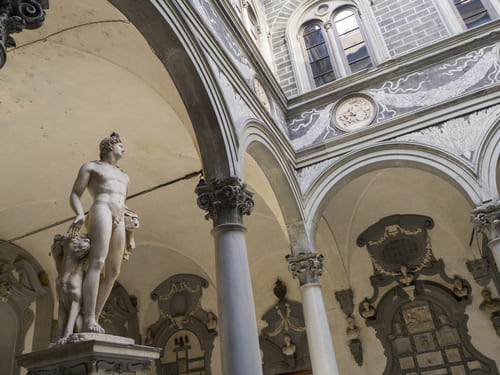
The designer of this Renaissance palace was Cosimo’s frequent collaborator, Michelozzo. Palazzo Medici marked a big revolution in Florentine architecture, being the first Renaissance residence with an internal courtyard and rooms symmetrically distributed around it. The piano nobile (the noble floor) on the first floor contained the most beautiful rooms displaying collections of art, showcased to important guests visiting the palace.
A visit at Palazzo Medici will allow you to learn more about the early stages of the family’s history. On the first floor, you can admire the magnificent Magi Chapel, decorated during the 1450s by Benozzo Gozzoli with scenes of the Procession of the Three Magi arriving to worship the newborn Jesus. The decoration of the Magi Chapel is a political manifesto of Cosimo the Elder. Behind the youngest magus, representing the future of the Italian peninsula, walks the whole Medici faction – members of the family and political allies like the rulers of Rimini and Milan, who supported Medici power in town.
Among the faces represented in the frescoes, you will find the portraits of many members of the family and other important personalities living in 15th-century Florence.
Medici family in Florence and San Lorenzo
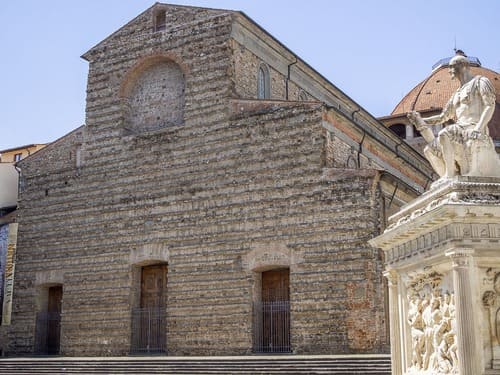
To reinforce his dominating position in the city, Cosimo the Elder sponsored the reconstruction and renovation of the ancient Basilica of San Lorenzo, the Medici parish church, standing just behind their palace. Here, he collaborated with Filippo Brunelleschi, the brilliant architect who had just designed the innovative dome for the Florentine Cathedral.
The basilica was a very important symbolic place for Florence as one of the oldest Christian churches in the city. It functioned as the first cathedral of Florence.
Brunelleschi designed the new church following the rules of Renaissance architecture—symmetry, proportion, and geometric perfection of volumes.
The history of the Medici family and the Cappelle Medicee
With time, the Medici family transformed San Lorenzo into their funerary temple with the multiple funerary chapels built as part of the complex.
The first burial place designed for the Medici within San Lorenzo was the so-called Old Sacristy, a masterpiece of Early Renaissance architecture created by Filippo Brunelleschi and decorated by Donatello. The Old Sacristy houses the tombs of Giovanni di Bicci de’ Medici, his wife Piccarda Bueri and Piero de’ Medici, father of Lawrence the Magnificent.
Cosimo the Elder was buried in the crypt beneath the church in a very symbolic tomb covered by a huge pilaster that supports the entire basilica. Until today, Cosimo is the actual “brick” that supports the whole church.
During the papacy of the two Medici popes, Leo X and Clement VII, Michelangelo Buonarroti worked at San Lorenzo designing yet another funerary space for the family: the so-called New Sacristy, which today is part of the Medici Chapels complex.
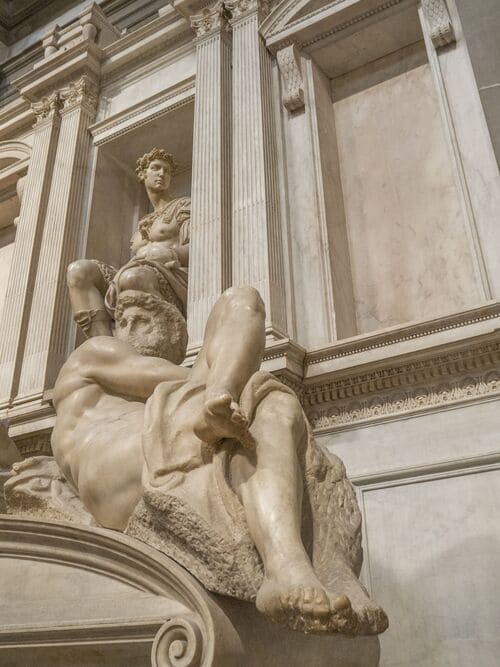
This unique space houses the tombs of the first two Dukes from the Medici family, Giuliano de’ Medici, Duke of Nemours and Lorenzo de’ Medici, Duke of Urbino.
Michelangelo arranged the space inspired by Brunelleschi’s Old Sacristy. The tombs of the Dukes express Neoplatonic ideas representing the characters of the two men through the allegories of the different moments of the day.
On Lorenzo’s sarcophagus you find the Dawn and the Dusk, while Giuliano is surrounded by the Day and the Night. The last funerary chapel built for the Medici family at San Lorenzo is the splendid Chapel of the Princes, designed by Matteo Nigetti in 1589. The commissioner of this immense and impressive space was Ferdinand I de’ Medici, who wanted to mark with it the prestige, wealth and importance of the dynasty.
In order to convey the idea of the eternal duration of Medici’s fame, he wanted this space decorated with stones. This is when the Florentine workshop of hard stone inlay Opificio delle Pietre Dure was established, and the unique decorative technique of commesso fiorentino, Florentine stone inlay, was created.
The Chapel of the Princes, accessible today as part of the museum of the Medici Chapels, is the most impressive and wealthy of the Medici’s funerary monuments.
Medici: Florence and Palazzo Vecchio
The rule of Cosimo I de’ Medici was definitely the most significant for the history of the family. Cosimo, who became the Duke of Florence in 1537, managed to increase the importance of the dynasty and to enlarge the territories ruled by the Medici. In order to symbolically mark the end of the independent Republican state, Cosimo moved in with his family to the old town hall, today’s Palazzo Vecchio.
The Palace was transformed from what was the heart of the Florentine Republic and the site of the local independent government into the first ducal palace of the Medici dynasty. The visit at Palazzo Vecchio allows you to learn more about Cosimo I and his wife Eleonora di Toledo, as you visit their private apartments and the magnificent Hall of the Five hundreds that glorifies the figure of the Duke.
Palazzo Pitti: the last residence of De Medici family
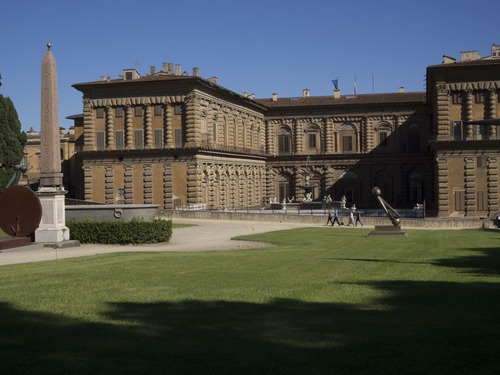
Not satisfied with the private apartment at the Palazzo Vecchio, the Duchess of Florence, Eleonora di Toledo, promoted the idea of the acquisition of a palace and the grounds on the other side of the Arno river, that belonged to the Pitti family. She wanted to create a magnificent private residence for the Medici with the representative gardens behind it.
This is how the complex of the Pitti Palace and the Boboli Gardens was born.
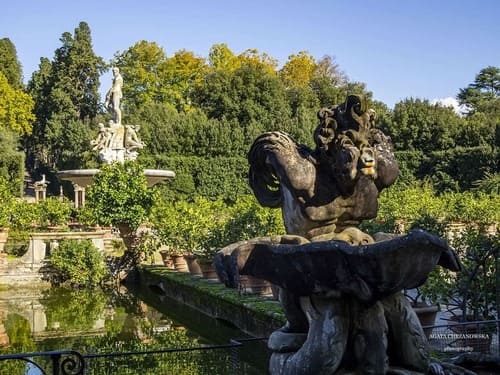
With time the Pitti Palace became the splendid residence for the Medici and was later used by the Habsburg-Lorrain dynasty that succeeded to the Medici on the throne of the Duchy of Tuscany. After the unification of Italy in 1861, when Florence became the capital of the united Kingdom of Italy in 1865, the Pitti Palace became the royal residence for King Victor Emanuel II.
Today the Pitti Palace is a huge museum hub with the magnificent Palatine Gallery, Royal Apartments, Gallery of Modern Art, Treasury of the Grand Dukes, Museum of Fashion and Costume and the Boboli Gardens.
Do you want to discover the history of the Medici family during a guided tour in Florence? Discover the two itineraries dedicated to the Medici: Medici in San Lorenzo and Medici the Dukes.
Contact us! We will be happy to organize your private tour in Florence!


